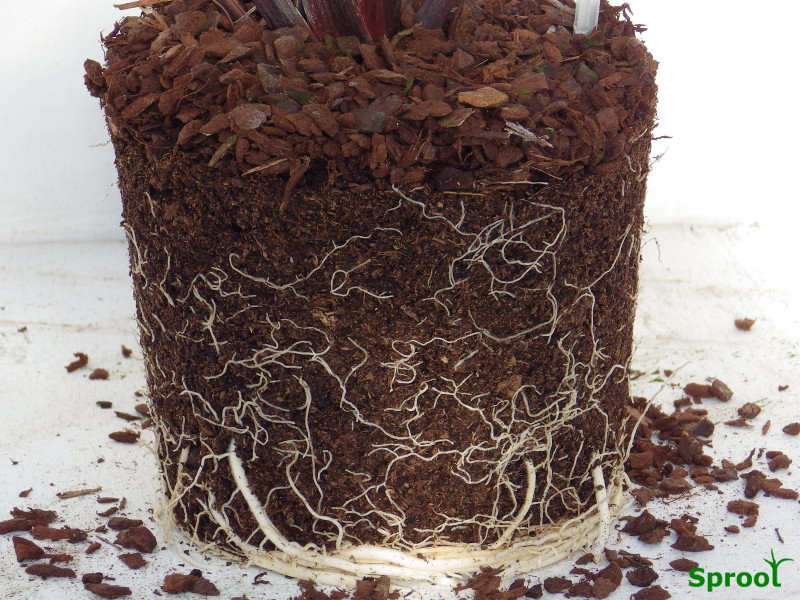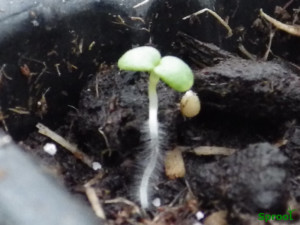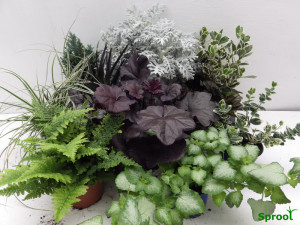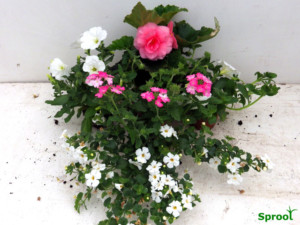Potting for health
Why would you keep your plant in the same pot for all of its life, surely it won’t like it.
Plants can be quite happy even in very small pots, Japanese bonsai trees are an extreme example, Some bonsai are over 100 years old and have remained in the same pots for many years, so we know potting for health works.
What kind of plants would be suitable.
House plants
Your favourite house plant may have grown quite large but you don’t have room for a bigger pot, you may want to keep it in the same decorative pot. You can keep it healthy by replacing some of the compost every year.
Summer plants
There are some summer flowering plants that can be grown in pots for standing out during the summer,they can then be kept over the winter, A garage , unheated greenhouse or conservatory is okay. Dahlias, geraniums, cannas and fuchsias for example can all be kept over the winter usually by just leaving them in the pots.
Outdoor plants
You might want to have some pots with permanent plants as focal points on the patio or in the garden. Large Patio pots for instance may be too heavy to move but you can keep them healthy by replacing some of the compost every year.
The principles are simple. we want to encourage a continuous supply of new roots, we know that root hairs are important for growth, so we want to give them the best conditions to grow. Remember root hairs are at the ends of new roots.
When to re pot.
You can pot plants at anytime of the year, but common sense says re pot when the plant is actively growing. It should be warm enough for the new roots to develop. The quality of sunlight is also vital, on the nursery we know that if you add up all the sunlight in January it is only equivalent to one sunny day in June so it makes no sense to re pot in the Winter.
With outdoor pots topdressing or root pruning is best carried out in the early spring. This can be done before the leaves start to open,as the new roots will have already started to grow.
However potting at anytime is better than no re-potting.
Potting for health is simple, it depends if you can get the plant out of the pot.
I can get the plant out of the pot.
With the plant out we can exam the root ball, usually it is obvious what to do.

This cordyline has feeder roots on the top and thick water roots round the base, what I would suggest is replacing some of the compost and possibly trimming the feeder root area this will stimulate new feeder roots with the all important root hairs. personally I would leave the water roots alone to avoid damaging them.
Some plants will have all the roots near the base and none near the top, this is common in house plants. What you might find is white deposits on the surface of the compost this is the clue.
In the house water can evaporate from the top of the compost leaving behind fertiliser salts, this creates a salty area, that roots won’t try to grow in. To repot I would remove this top area and replace with fresh compost
The pot or plant is too heavy to move.
Your options are reduced, but what you can do is replace the feeder root area at the top of the pot. Using a trowel or even a stick loosen up the top 3-4″ of compost, remove as much as you can, there will be some roots showing but this is normal.
Top up with fresh compost, Use one that contains some soil or loam, during the year new roots will grow. You should find the colour improves in the leaves as the new roots provide more nutrients for growth. You have to repeat the process again next year, you will then get a yearly cycle of new roots full of root hairs.
I can see you thinking, why don’t I just feed the plants instead.
Feeding will work for a while but eventually the supply of new root hairs will decrease as the plant runs out off space to grow new roots. Topdressing or root trimming creates the space for new roots to develop, this allows the plant to take up more food.




